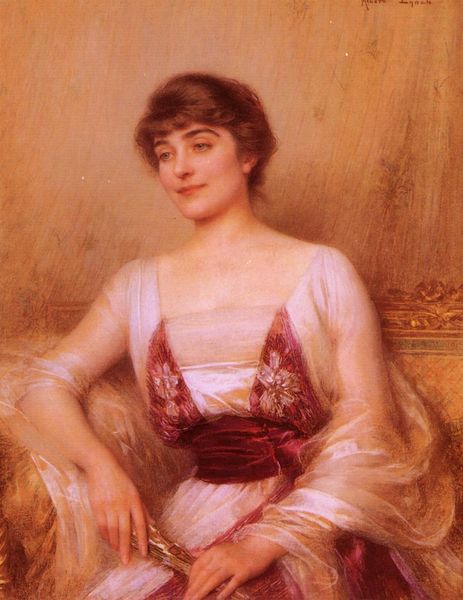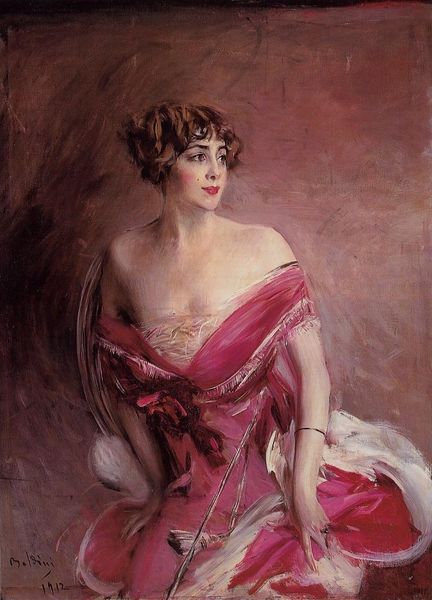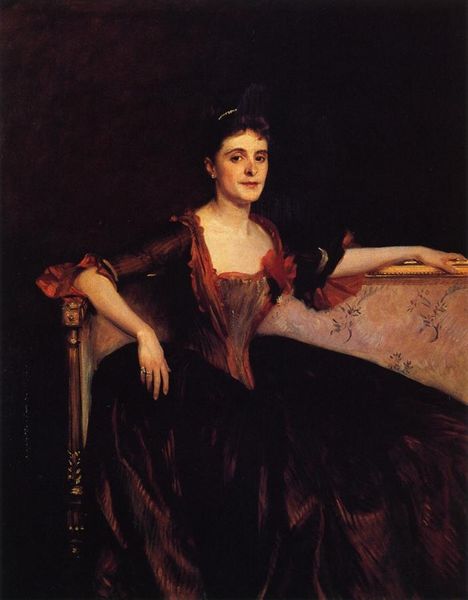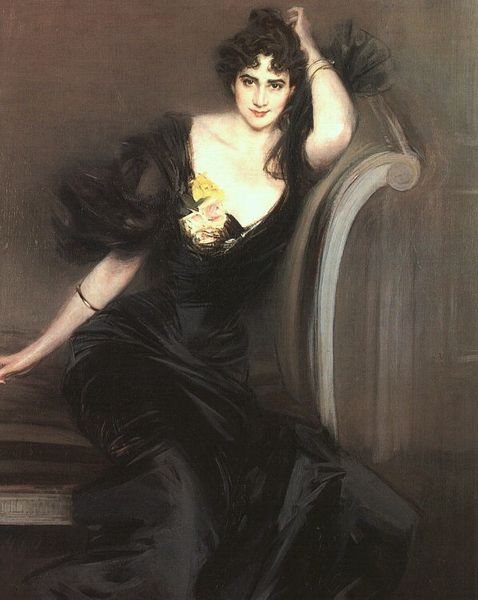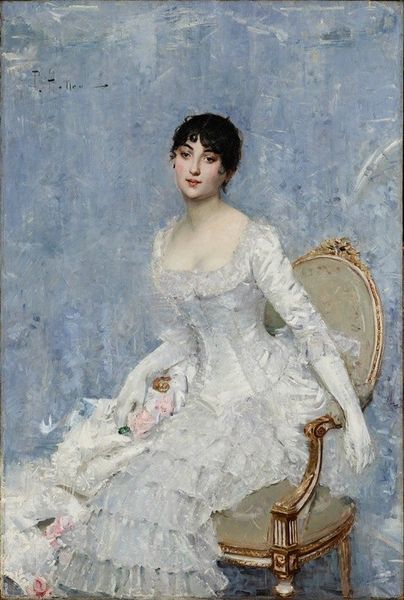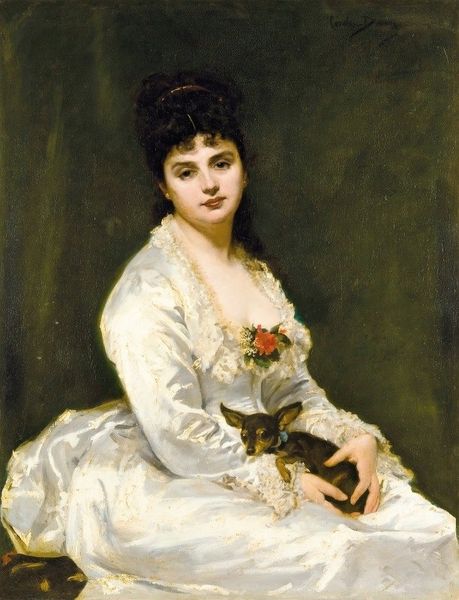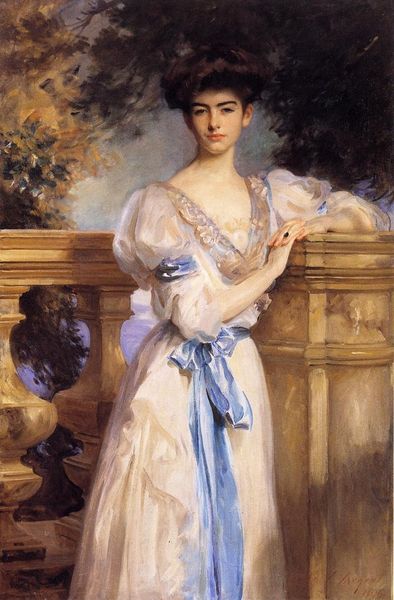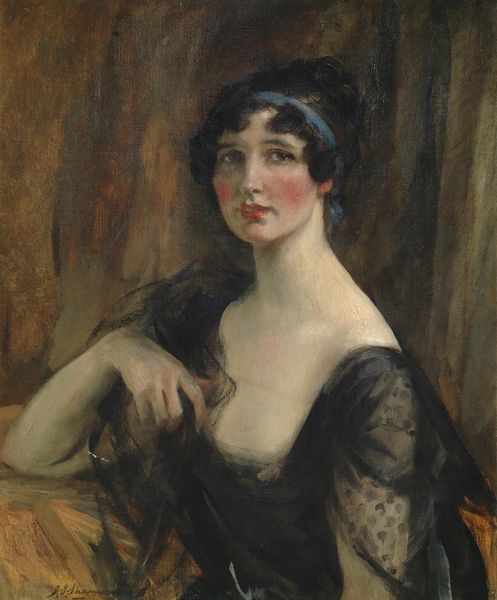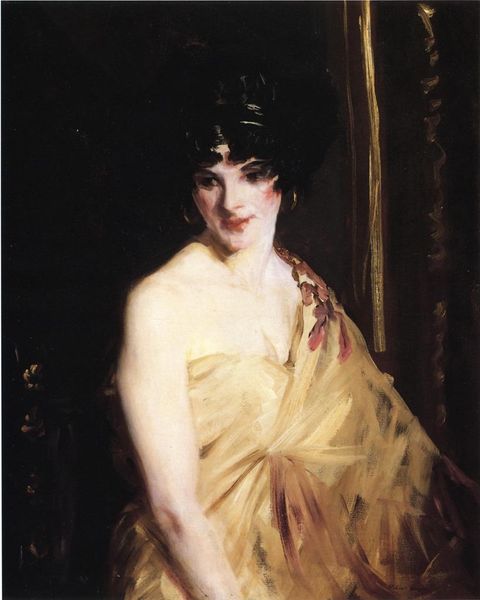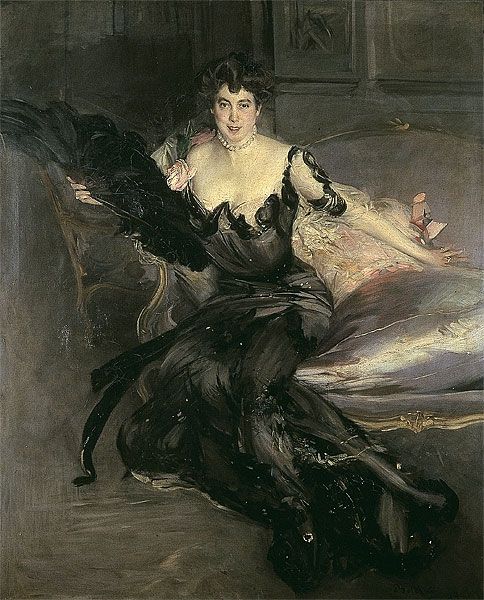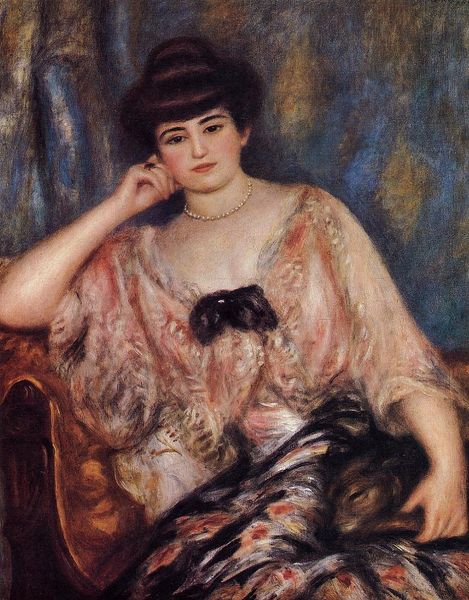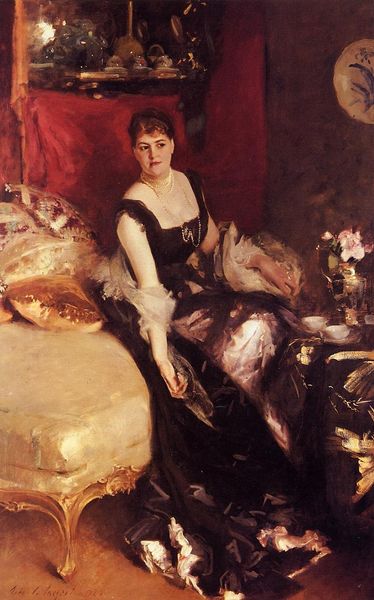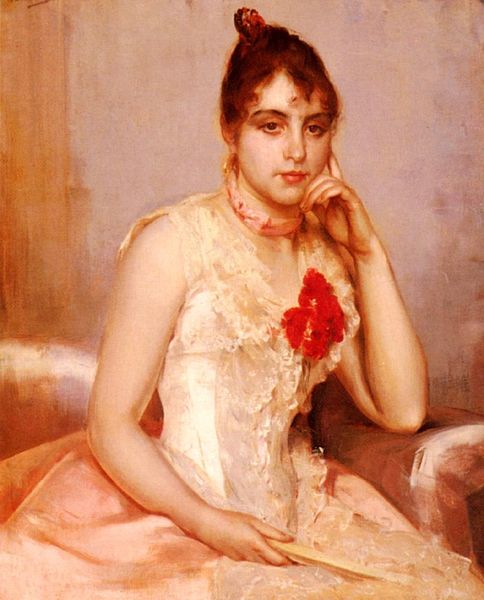
Dimensions: 139.7 x 101.6 cm
Copyright: Public domain
Curator: The Countess de Rasty, captured in 1878 by Giovanni Boldini. What a captivating introduction to fin-de-siècle Parisian society, wouldn't you say? Editor: She certainly has an air of serene confidence. The colours are quite muted, almost dreamy, save for that striking burgundy dress. The composition feels a bit... unbalanced? Is that intentional, do you think? Curator: Boldini, a master of portraying the elite, presents a figure caught between worlds. Observe the stylistic tensions; traces of realism ground her form, yet romantic and impressionistic flourishes swirl around her. We see a woman embedded in structures of power, wealth visibly shaping her presentation. Editor: Precisely. That "structured presentation" speaks volumes about gendered expectations within the social milieu of the time. It begs the question, to what degree is her perceived "confidence" a performance for the male gaze that defined the era's art and society? Curator: An astute point. Consider too, the brushstrokes; they’re loose, gestural – almost suggestive of a fleeting moment, while her garments are clearly coded to display luxury and stature. Boldini simultaneously acknowledges the constructed nature of identity while contributing to the Countess's aura of untouchable beauty. Editor: The fur stole and opulent fabric of her gown act as barriers as much as adornments. What is she guarding behind her pose? And who is she performing this identity for? Are those ghosts in the faded wall covering a subtle wink at the invisible women whose labor propped up the aristocratic lifestyle? Curator: Boldini straddled the line between documenting and mythologizing his subjects, complicit in the era's inequalities while offering hints of the complex individuals beneath the artifice. Editor: So this seemingly straightforward portrait presents layers of social commentary, revealing the nuanced interplay between gender, class, and the performance of identity during a pivotal time in art history. Curator: Yes, seeing her portrayed here today gives us the opportunity to consider the continued relevance of identity, performance, and social structures as central to portraiture today.
Comments
No comments
Be the first to comment and join the conversation on the ultimate creative platform.
